Prok American Persimmon Tree
Description
A standout among American persimmons, the Prok Persimmon Tree (Diospyros virginiana ‘Prok’) is prized for its large, flavorful fruit, cold-hardiness, and easy-care nature—perfect for growers in USDA Zones 5–8.
Originally selected by renowned fruit grower John Gordon of New York, ‘Prok’ produces extra-large, deep orange fruit that’s sweet, juicy, and nearly seedless when fully ripe. With a smooth, custard-like texture, these persimmons are excellent for fresh eating, baking, preserves, and drying.
The tree itself is a vigorous, fast-growing native variety, reaching a mature size of 35–50 feet tall and wide, making it an excellent shade or specimen tree in larger yards, homesteads, or food forests.
Why You’ll Love the Prok American Persimmon Tree
- Large fruit size – Produces medium to large orange persimmons, 2.5–3 inches in diameter
- Delicious flavor – Sweet, smooth, and rich with honeyed notes when fully ripe
- Heavy-bearing – Known for its consistent, abundant crops once established
- Cold-hardy & adaptable – Thrives in Zones 5–8, tolerant of loamy, well-drained soil
- Self-pollinating – No second tree needed to produce fruit
- Low maintenance – Drought-tolerant once established; few pest issues
- Native species – Supports wildlife and pollinators; beautiful white spring blooms
Prok Persimmon Tree Growing & Care Guide
- Ripening Time: Mid-September to late fall
- Sunlight: Full sun (6–8 hours/day)
- Soil Needs: Prefers well-drained loamy soil, pH 6.0–7.0
- Watering: Moderate; keep soil evenly moist during establishment
- Fertilizer: Balanced fertilizer applied in early spring
- Pruning: Minimal—remove dead or damaged branches in late winter
- Years to Bear: 3–4 years after planting
- Mature Size: 35–50 feet tall and wide
- Recommended Spacing: 35–50 feet apart
Whether you’re planting a backyard orchard or want a native tree that delivers beauty and bounty, the Prok American Persimmon is a trusted favorite among home growers for its early ripening, impressive yields, and reliably cold-hardy, low-maintenance growth.
Note: Our persimmon trees are grown in EZ Start® pots, which allow the roots to self-air prune and redirect energy to producing a dense mass of feeder roots. The main tap root will begin forming once planted in its permanent location, and will fully develop over the next 2-3 years.
Survival Guaranteed!


Since 1816, Stark Bro’s has promised to provide customers with the very best fruit trees and plants. It’s just that simple. If your trees or plants do not survive, please let us know within one year of delivery. We will send you a free one-time replacement, with a nominal shipping fee of $9.99. If the item in question is not available, we can issue a one-time credit to your account equaling the original product purchase price or issue you a refund. Read more about our warranty policy.
Characteristics
| Bloom Color | White |
| Fruit Color | Orange |
| Fruit Size | Medium |
| Hardiness Zone Range | 5 - 8 |
| Pollination | Self-Pollinating |
| Ripens/Harvest | Mid September |
| Shade/Sun | Full Sun |
| Soil Composition | Loamy |
| Soil Moisture | Well Drained |
| Soil pH Level | 6.0 - 7.0 |
| Taste | Sweet |
| Texture | Soft, Smooth |
| Years to Bear | 3 - 4 |
Size & Spacing
Mature Size
Recommended Spacing
Zone Compatibility
Pollination
This variety is self pollinating.
Tools & Supplies
Planting & Care
Learn all about how to grow persimmon trees in The Growing Guide. An entire section of our website dedicated to your growing success.
Shipping Information
Arrives when it's time to plant
Questions & Answers
I've had the same problem with my Yates American Persimmon. It's a beautiful tree, great shape and has bloomed now for over 3 seasons but no fruit. The blooms seem very small. I'm afraid that it's not actually a Yates and is a male variety of another American Persimmon. I've been trying to look up photos of the blooms of the Yates but haven't had much luck in my searching. I just find photos of the fruits and other variety's blooms.
Prok will be astringent if it is not allowed to fully ripen. You cannot judge ripeness by the skin color, since the fruit will be fully orange before it is ripe. When ripe, Prok persimmon fruit should be completely soft, with an almost jelly-like texture inside when it is sweet enough to eat. A good sign of ripeness is when the fruit starts dropping from the tree. Just gather and enjoy!
Not the one in my yard. I had to put a welded wire fence around mine.
Definitely go with prok. Its a larger persimmon with better quality fruit than yates.
Although the staff answered, I would add that it is almost definitely a seedling American persimmon (Diospyros virginiana), since there are no clonal or improved rootstocks for persimmons. Asian persimmons for the west coast are often grafted to Lotus persimmon (Diospyros lotus) rootstocks, but they aren't nearly as hardy as native American persimmons so they should never be used for our native persimmons which can be hardy to zone 5 or even 4. Because your rootstock is sprouting, it will just be a native persimmon seedling now growing which may be either male (75% of the time) or female (25%) tree. If it is male you won't get any fruit and if it is female you probably will only get fruit if there is a male nearby to polinate it since most wild persimmons don't hold fruit without pollination.
Persimmons are grafted with an American seedling which is unknown as they are picked from a bin.
There should be no transplant shock as we recommend acclimation at home before planting. These are also grown in hot,humid green houses as well so they are used to the warm summer heat.
Both Prok and Yates, sold here, produce female flowers and only female flowers. Although people keep saying they self-pollinate, that is incorrect. They just happen to be varieties that will hold and mature fruit without pollination, which is technically known as parthenocarpic. If you keep your trees and plant one of these, these will be pollinated by your male trees and will have seeds.
The secret to keeping fruit trees to a height that is convenient for you is by pruning. Think of a height you want to keep it at and don't let it go beyond that goal, if it does, you prune it off. You can keep fruit trees to any desired height whether it is a semi-dwarf or standard size tree by size management.
Even if you just plant one you may have seeds if there are any native male persimmons growing in the area. Bees love persimmon pollen and will often range over a wide area between trees when they are in flower. If you aren't in an area where there are native persimmons you won't have seeds, even if you plant more than one of these, since unlike the answer above states, they don't actually cross-pollinate since these are all cultivated types that only have female flowers. These varieties don't require pollination to set fruit.

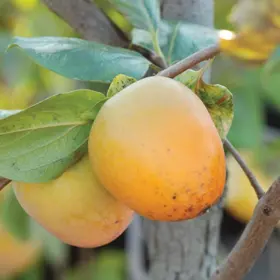
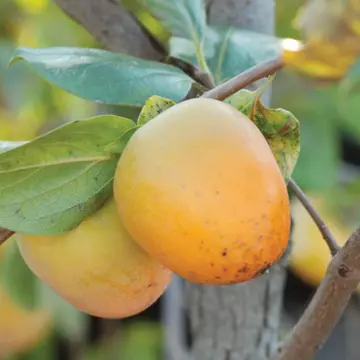
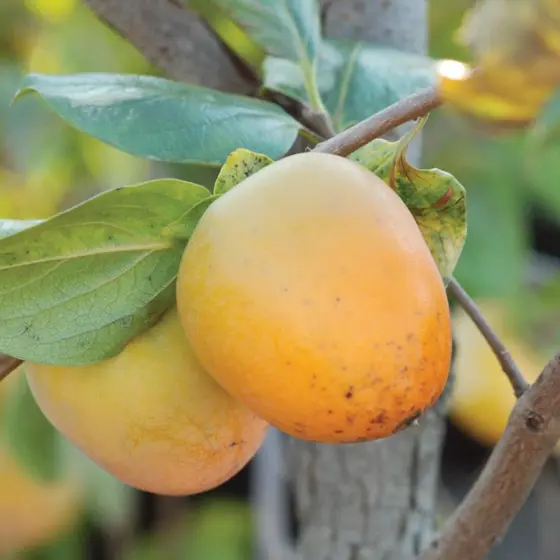

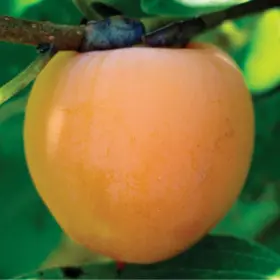
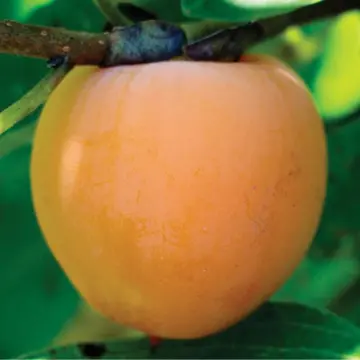
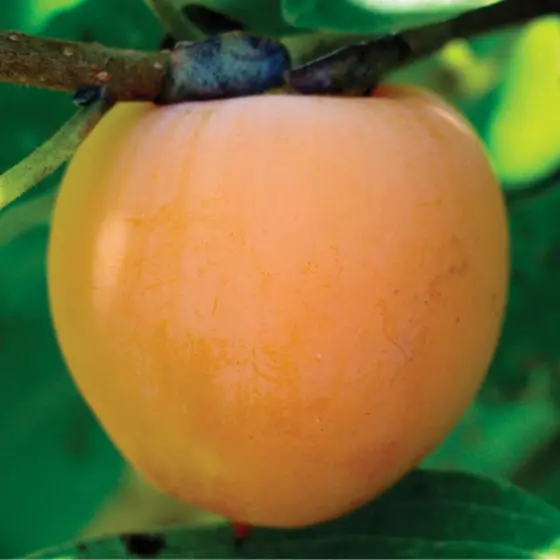

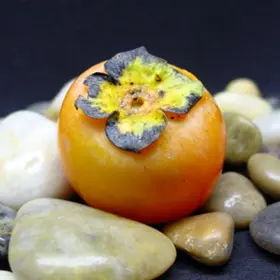
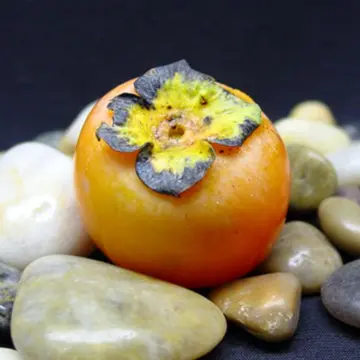
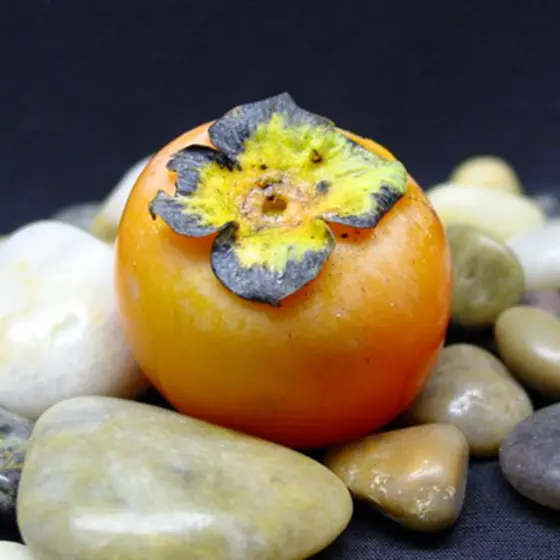


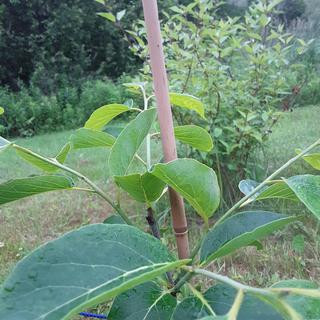
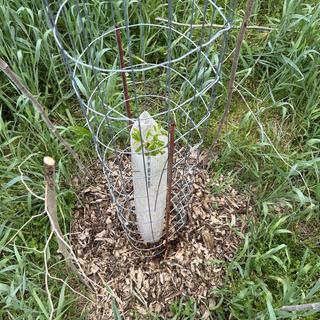
Cold tolerance
Wildlife planting
Prok seems to have a good reputation, including large fruit sizes for American persimmon, well-liked flavor (I believe), and a less mushy texture (if I recall correctly).
I am adding to my collection of american persimmons.